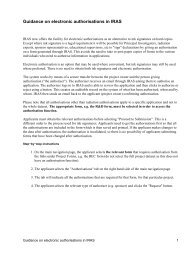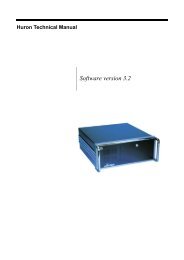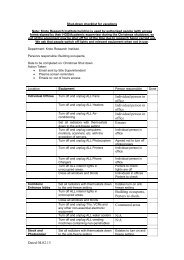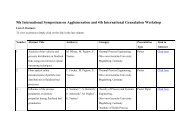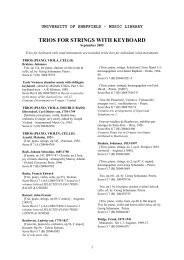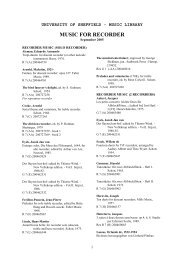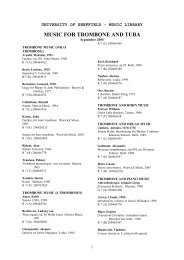Use of an oscilloscope
Use of an oscilloscope
Use of an oscilloscope
Create successful ePaper yourself
Turn your PDF publications into a flip-book with our unique Google optimized e-Paper software.
If the x- <strong>an</strong>d y-inputs are in phase the trace will consists <strong>of</strong> a straight line at 45° for<br />
equal ch<strong>an</strong>nel gains <strong>an</strong>d signal amplitudes (on some <strong>oscilloscope</strong>s the x-deflection is<br />
reversed so the line has a negative gradient). If sinusoidal inputs <strong>of</strong> the same<br />
frequency are applied which are not in phase, <strong>an</strong> ellipse is produced. The phase<br />
difference between the x- <strong>an</strong>d y-signals may be determined by reference to the<br />
previous diagram.<br />
Task 8. Set the signal generator frequency to 3 kHz <strong>an</strong>d determine the phase<br />
difference between the two signals. Compare this result with your previous<br />
determination.<br />
Lissajou’s Figures<br />
An <strong>oscilloscope</strong> c<strong>an</strong> be also used in x-y mode to compare frequencies, as well as<br />
phases. For this exercise you will need two signal generators, e.g. one mains <strong>an</strong>d one<br />
battery operated.<br />
Task 9. Connect one <strong>of</strong> the signal generators, operating at 1 kHz, to the X input, <strong>an</strong>d<br />
<strong>an</strong>other, operating at 500 Hz, to the Y input. Carefully adjust the frequency <strong>of</strong> the<br />
second generator until you obtain a pattern which is as close to stationary as possible.<br />
Sketch the display. Repeat this exercise for other frequencies which have simple<br />
integer ratios, such as 1:3, 2:3, 3:4 etc. (It should be possible to obtain some pretty<br />
patterns, known as Lissajou’s Figures, if the signal generators are sufficiently stable).<br />
Other Oscilloscope Controls<br />
There are a number <strong>of</strong> other controls <strong>an</strong>d modes <strong>of</strong> operation which have not been<br />
discussed. Most <strong>of</strong> these relate to y-t mode rather th<strong>an</strong> x-y, so if you have time set<br />
your <strong>oscilloscope</strong> back to y-t <strong>an</strong>d try to determine what these additional functions do.<br />
Some, such as ADD, are self-expl<strong>an</strong>atory. If you c<strong>an</strong>not determine what a particular<br />
control does, see if the demonstrator c<strong>an</strong> do <strong>an</strong>y better!<br />
D J Mowbray<br />
July 2003<br />
6





